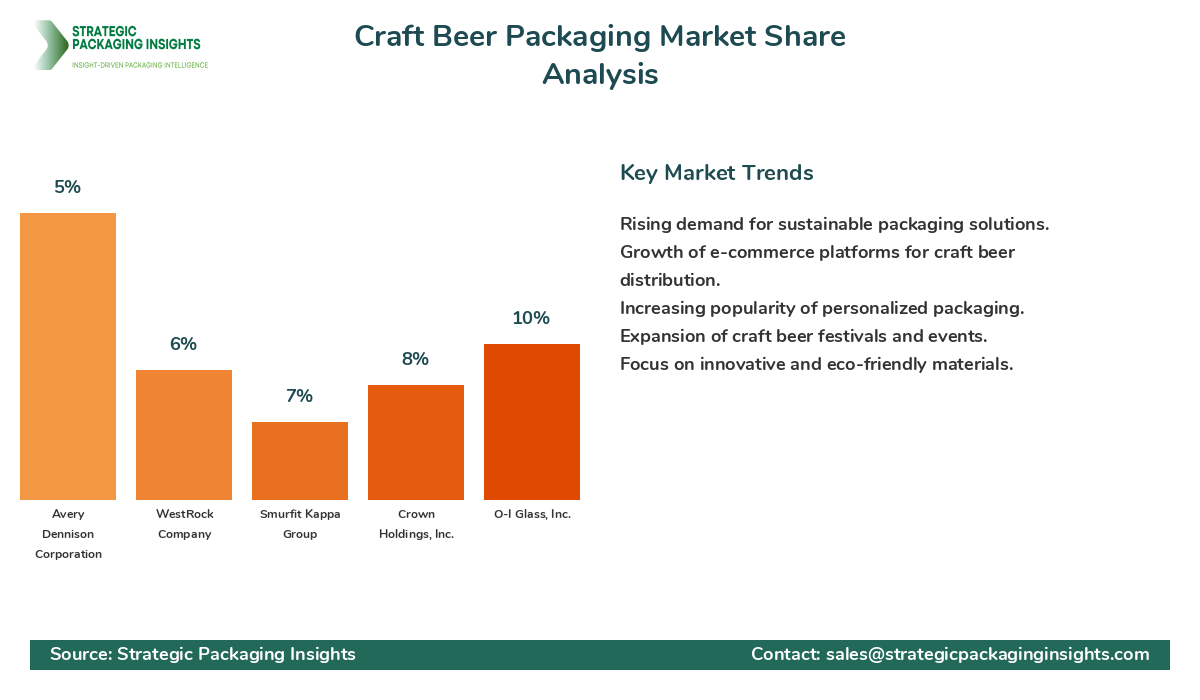- Home
- Beverage Packaging
- Craft Beer Packaging Market Size, Future Growth and Forecast 2033
Craft Beer Packaging Market Size, Future Growth and Forecast 2033
Craft Beer Packaging Market Segments - by Material (Glass, Metal, Paper & Paperboard, Plastic), Packaging Type (Bottles, Cans, Kegs, Growlers), Application (Brewery, Retail, Bars & Restaurants), and Region (Asia Pacific, North America, Latin America, Europe, and Middle East & Africa) - Market Dynamics, Growth Opportunities, Strategic Drivers, and PESTLE Outlook (2025–2033)
Craft Beer Packaging Market Outlook
The craft beer packaging market was valued at $1.2 billion in 2024 and is projected to reach $2.5 billion by 2033, growing at a CAGR of 8.5% during the forecast period 2025-2033. This growth is driven by the increasing popularity of craft beer among consumers who are seeking unique flavors and premium quality. The rise in microbreweries and small-scale breweries has significantly contributed to the demand for innovative and Sustainable Packaging solutions. Additionally, the trend towards eco-friendly packaging is pushing manufacturers to adopt recyclable and biodegradable materials, further propelling market growth.
Report Scope
| Attributes | Details |
| Report Title | Craft Beer Packaging Market Size, Future Growth and Forecast 2033 |
| Base Year | 2024 |
| Historic Data | 2017-2023 |
| Forecast Period | 2025-2033 |
| Number of Pages | 152 |
| Material | Glass, Metal, Paper & Paperboard, Plastic |
| Packaging Type | Bottles, Cans, Kegs, Growlers |
| Application | Brewery, Retail, Bars & Restaurants |
| Region | Asia Pacific, North America, Latin America, Europe, Middle East & Africa |
| Customization Available | Yes* |
Opportunities & Threats
The craft beer packaging market presents numerous opportunities, particularly with the growing consumer preference for premium and artisanal beverages. As consumers become more health-conscious and environmentally aware, there is a rising demand for sustainable packaging solutions. This trend is encouraging manufacturers to innovate and develop packaging that not only preserves the quality of the beer but also minimizes environmental impact. The increasing popularity of craft beer festivals and events is also creating opportunities for unique and eye-catching packaging designs that can capture consumer attention and enhance brand visibility.
Another significant opportunity lies in the expansion of e-commerce platforms, which has opened new avenues for craft beer distribution. Online sales channels are becoming increasingly popular, allowing breweries to reach a wider audience and offer a diverse range of products. This shift towards online retailing is driving the need for packaging that ensures product safety during transit while also providing an attractive unboxing experience for consumers. Additionally, the growing trend of personalized and limited-edition packaging is providing breweries with the chance to differentiate their products and build brand loyalty among consumers.
However, the craft beer packaging market also faces certain threats, primarily from the volatility in raw material prices. The cost of materials such as glass, metal, and paper can fluctuate significantly, impacting the overall production costs for packaging manufacturers. Furthermore, stringent regulations regarding packaging waste and recycling can pose challenges for companies, requiring them to invest in sustainable practices and technologies. The intense competition within the craft beer industry also means that packaging companies must continuously innovate to stay ahead and meet the evolving demands of consumers.
The craft beer packaging market is characterized by a highly competitive landscape, with numerous players vying for market share. Key companies in this market are focusing on product innovation, strategic partnerships, and mergers and acquisitions to strengthen their position. The market is dominated by a few major players who hold a significant share, while several smaller companies are also making their mark by offering niche and customized packaging solutions. The competitive dynamics are influenced by factors such as pricing strategies, product quality, and brand reputation.
Ball Corporation is a leading player in the craft beer packaging market, known for its innovative Metal Packaging solutions. The company has a strong presence in North America and Europe, and its focus on sustainability has helped it gain a competitive edge. Ardagh Group, another major player, offers a wide range of glass and metal packaging options, catering to the diverse needs of the craft beer industry. The company's emphasis on design and customization has made it a preferred choice for many breweries.
O-I Glass, Inc. is renowned for its high-quality Glass Packaging solutions, which are widely used in the craft beer sector. The company's commitment to sustainability and innovation has enabled it to maintain a strong market position. Crown Holdings, Inc. is also a key player, offering metal packaging solutions that are both durable and aesthetically appealing. The company's global reach and extensive product portfolio make it a formidable competitor in the market.
Other notable companies in the craft beer packaging market include Smurfit Kappa Group, known for its paper-based packaging solutions, and WestRock Company, which offers a range of sustainable packaging options. These companies are continuously investing in research and development to enhance their product offerings and meet the changing demands of the craft beer industry.
Key Highlights Craft Beer Packaging Market
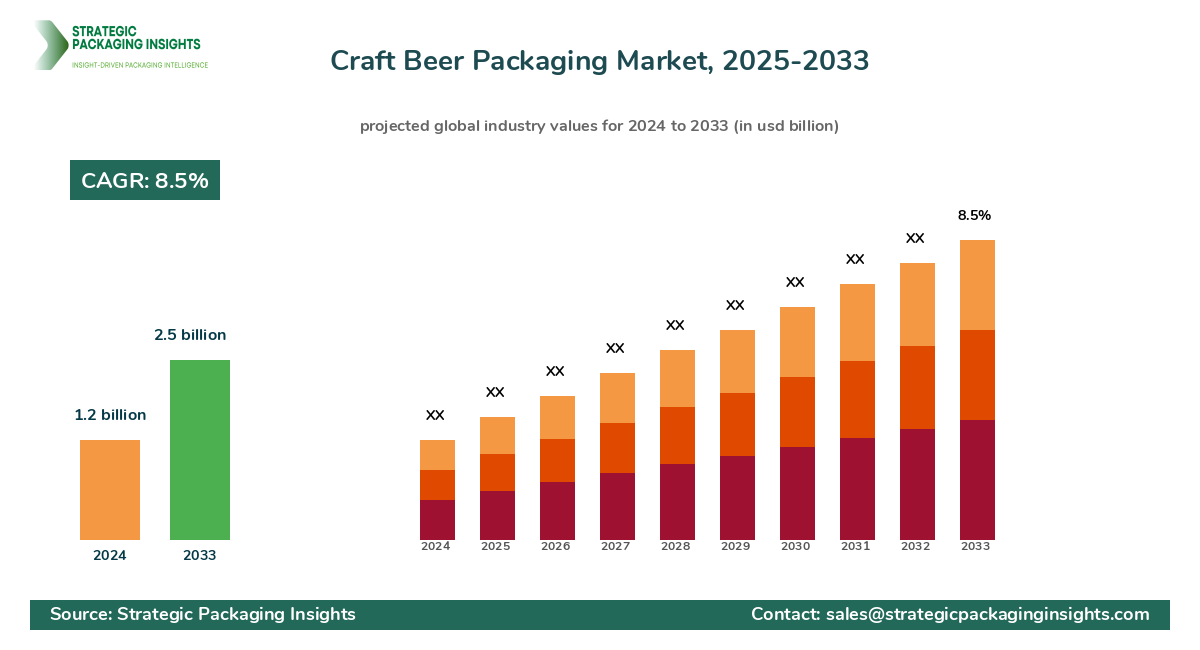
- Increasing demand for sustainable and eco-friendly packaging solutions.
- Rising popularity of craft beer festivals and events driving packaging innovation.
- Expansion of e-commerce platforms creating new distribution channels.
- Growing trend of personalized and limited-edition packaging.
- Volatility in raw material prices impacting production costs.
- Stringent regulations on packaging waste and recycling.
- Intense competition among packaging manufacturers.
- Focus on product innovation and strategic partnerships.
- Emergence of niche and customized packaging solutions.
- Strong presence of major players in North America and Europe.
Premium Insights - Key Investment Analysis
The craft beer packaging market is witnessing significant investment activity, driven by the increasing demand for innovative and sustainable packaging solutions. Venture capital firms and private equity investors are showing keen interest in companies that offer eco-friendly and customizable packaging options. The market is also seeing a rise in mergers and acquisitions, as larger companies seek to expand their product portfolios and enhance their market presence. These strategic deals are often motivated by the desire to tap into emerging markets and leverage new technologies.
Investment valuations in the craft beer packaging market are on the rise, reflecting the growing potential of this sector. Investors are particularly attracted to companies that demonstrate strong growth prospects and a commitment to sustainability. The return on investment (ROI) expectations are high, given the increasing consumer preference for craft beer and the expanding distribution channels. Emerging investment themes include the development of biodegradable materials, smart packaging solutions, and digital printing technologies.
Risk factors in the craft beer packaging market include regulatory challenges, fluctuations in raw material prices, and intense competition. However, the strategic rationale behind major deals often revolves around the opportunity to gain a competitive edge through innovation and differentiation. High-potential investment opportunities are found in regions with a burgeoning craft beer culture, such as North America and Europe, where consumer demand is driving the need for advanced packaging solutions.
Craft Beer Packaging Market Segments Insights
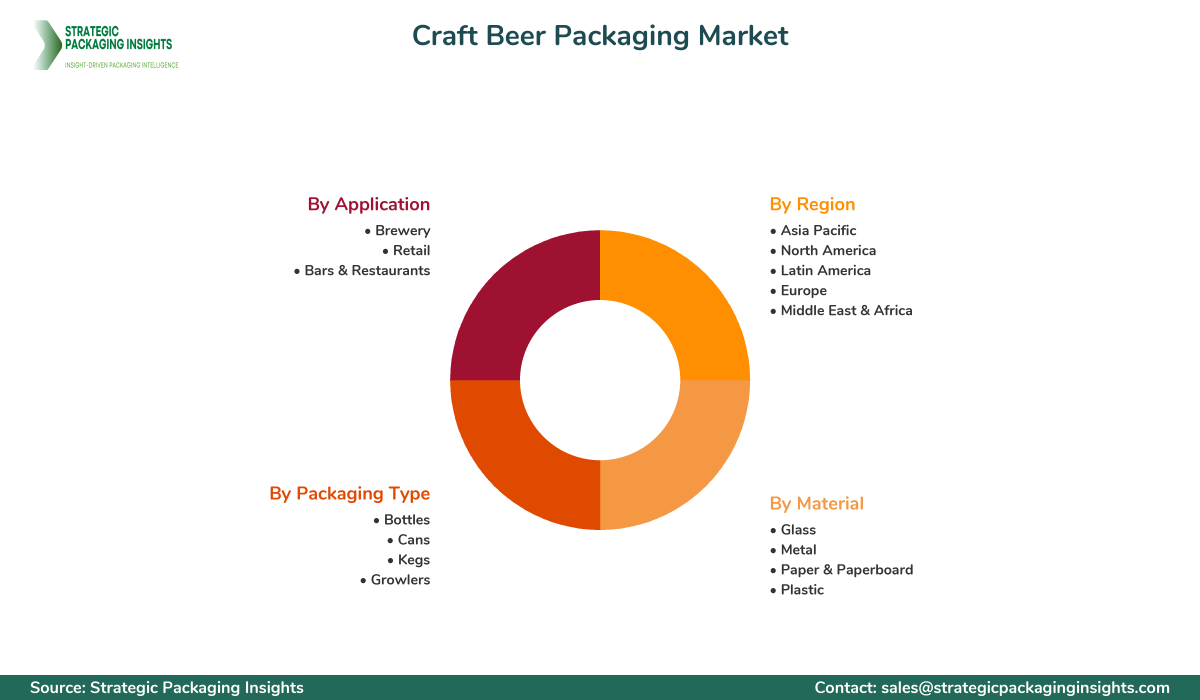
Material Analysis
The material segment of the craft beer packaging market is dominated by glass, metal, paper & Paperboard, and plastic. Glass remains a popular choice due to its ability to preserve the taste and quality of beer, while also offering a premium look. The demand for metal packaging, particularly aluminum cans, is rising due to their lightweight nature and recyclability. Paper & Paperboard Packaging is gaining traction as an eco-friendly alternative, with many breweries opting for biodegradable options. Plastic packaging, although less favored due to environmental concerns, is still used for its cost-effectiveness and versatility.
Trends in this segment are driven by the increasing focus on sustainability and the need for packaging that aligns with consumer values. Companies are investing in research and development to create materials that are not only functional but also environmentally friendly. The competition in this segment is intense, with players striving to offer innovative solutions that meet the evolving demands of the craft beer industry. Customer demand is shifting towards packaging that is both aesthetically pleasing and sustainable, prompting manufacturers to explore new materials and technologies.
Packaging Type Analysis
The packaging type segment includes bottles, cans, Kegs, and growlers. Bottles are traditionally favored for their classic appeal and ability to maintain the beer's flavor. However, cans are gaining popularity due to their convenience, portability, and lower environmental impact. Kegs are commonly used for larger quantities and are preferred by bars and restaurants for their efficiency and cost-effectiveness. Growlers, often used for take-home purposes, are popular among consumers who enjoy fresh, draft-quality beer.
Trends in this segment are influenced by consumer preferences for convenience and sustainability. The rise of craft beer festivals and events has increased the demand for portable and easy-to-use packaging options. Competition is fierce, with companies focusing on design and functionality to attract consumers. Customer demand is leaning towards packaging that offers a unique experience, such as limited-edition designs and personalized options. This has led to a surge in creative and innovative packaging solutions that cater to the diverse needs of the craft beer market.
Application Analysis
The application segment of the craft beer packaging market is divided into brewery, retail, and bars & restaurants. Breweries are the primary consumers of packaging solutions, requiring materials that preserve the quality and freshness of their products. Retail packaging is designed to attract consumers and enhance brand visibility on store shelves. Bars and restaurants demand packaging that is both functional and aesthetically appealing, as it plays a crucial role in the overall consumer experience.
Trends in this segment are shaped by the growing popularity of craft beer and the need for packaging that reflects the brand's identity. Companies are investing in innovative designs and materials to differentiate their products and capture consumer attention. The competition is intense, with players striving to offer packaging solutions that meet the specific requirements of each application. Customer demand is focused on packaging that enhances the overall drinking experience, prompting manufacturers to explore new technologies and design concepts.
Regional Analysis
The regional segment of the craft beer packaging market is characterized by varying consumer preferences and regulatory landscapes. North America and Europe are leading markets, driven by a strong craft beer culture and a focus on sustainability. The Asia Pacific region is experiencing rapid growth, fueled by increasing consumer interest in premium beverages and the expansion of e-commerce platforms. Latin America and the Middle East & Africa are emerging markets, with growing demand for craft beer and innovative packaging solutions.
Trends in this segment are influenced by regional consumer preferences and regulatory requirements. Companies are adapting their strategies to cater to the unique needs of each region, focusing on sustainable and culturally relevant packaging solutions. The competition is fierce, with players seeking to establish a strong presence in key markets. Customer demand is shifting towards packaging that aligns with regional values and preferences, prompting manufacturers to explore new materials and designs that resonate with local consumers.
Market Share Analysis
The market share distribution of key players in the craft beer packaging market is influenced by factors such as innovation, sustainability, and brand reputation. Companies like Ball Corporation and Ardagh Group are leading the market, thanks to their extensive product portfolios and commitment to sustainability. These companies are gaining market share by offering innovative packaging solutions that meet the evolving demands of consumers. On the other hand, smaller players are also making their mark by focusing on niche and customized packaging options.
The competitive positioning trends in the market are shaped by the need for differentiation and innovation. Companies are investing in research and development to create packaging solutions that stand out in a crowded market. The market share distribution affects pricing strategies, with leading players able to command premium prices for their products. Partnerships and collaborations are also playing a crucial role in shaping the competitive landscape, as companies seek to leverage each other's strengths to gain a competitive edge.
Top Countries Insights in Craft Beer Packaging
The United States is a leading market for craft beer packaging, with a market size of $500 million and a CAGR of 10%. The country's strong craft beer culture and focus on sustainability are driving demand for innovative packaging solutions. Germany, with a market size of $300 million and a CAGR of 8%, is another key market, known for its rich brewing tradition and emphasis on quality. The United Kingdom, with a market size of $200 million and a CAGR of 7%, is experiencing growth due to the increasing popularity of craft beer and the expansion of e-commerce platforms.
China, with a market size of $150 million and a CAGR of 12%, is an emerging market, driven by the rising consumer interest in premium beverages and the growth of online retail channels. Australia, with a market size of $100 million and a CAGR of 9%, is also witnessing growth, fueled by the increasing demand for craft beer and the focus on sustainable packaging solutions. These countries are characterized by unique growth drivers, such as favorable government policies, shifting consumer preferences, and technological advancements in packaging.
Craft Beer Packaging Market Segments
The Craft Beer Packaging market has been segmented on the basis of
Material
- Glass
- Metal
- Paper & Paperboard
- Plastic
Packaging Type
- Bottles
- Cans
- Kegs
- Growlers
Application
- Brewery
- Retail
- Bars & Restaurants
Region
- Asia Pacific
- North America
- Latin America
- Europe
- Middle East & Africa
Primary Interview Insights
What are the key drivers of growth in the craft beer packaging market?
What challenges does the craft beer packaging market face?
How is the e-commerce trend impacting the craft beer packaging market?
What role does innovation play in the craft beer packaging market?
Which regions are experiencing the most growth in the craft beer packaging market?
Latest Reports

The Hot Melt Glue Labeler market was valued at $1.2 billion in 2024 and is projected to reach $2.3 billion by 2033, growing at a CAGR of 6.5% during the forecast period 2025–2033.

The Ethical Label market was valued at $1.5 billion in 2024 and is projected to reach $3.2 billion by 2033, growing at a CAGR of 8.5% during the forecast period 2025–2033.

The Packaging Tensioner market was valued at $1.2 billion in 2024 and is projected to reach $2.3 billion by 2033, growing at a CAGR of 6.5% during the forecast period 2025–2033.
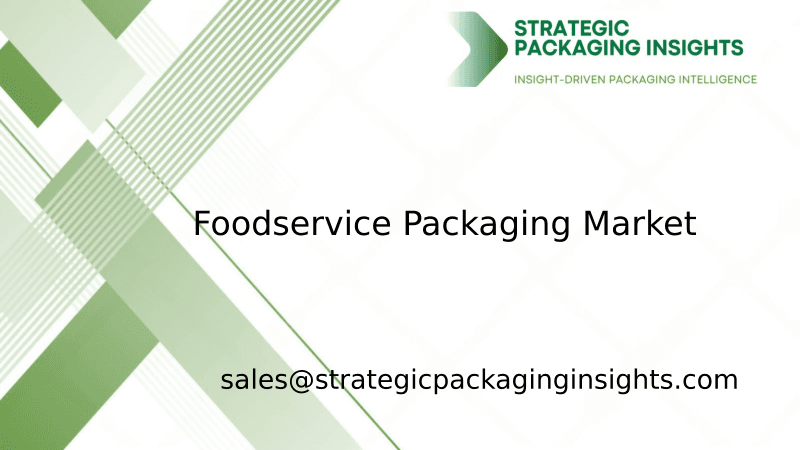
The foodservice packaging market was valued at $120 billion in 2024 and is projected to reach $180 billion by 2033, growing at a CAGR of 4.5% during the forecast period 2025–2033.

The nano-enabled packaging market was valued at $15.2 billion in 2024 and is projected to reach $35.6 billion by 2033, growing at a CAGR of 9.5% during the forecast period 2025–2033.

The Cold Seal Packaging market was valued at $1.5 billion in 2024 and is projected to reach $2.3 billion by 2033, growing at a CAGR of 4.8% during the forecast period 2025–2033.

The Transparent Barrier Packaging Films market was valued at $12.5 billion in 2024 and is projected to reach $20.3 billion by 2033, growing at a CAGR of 5.8% during the forecast period 2025–2033.

The Flatback Tape market was valued at $2.5 billion in 2024 and is projected to reach $4.1 billion by 2033, growing at a CAGR of 5.8% during the forecast period 2025–2033.
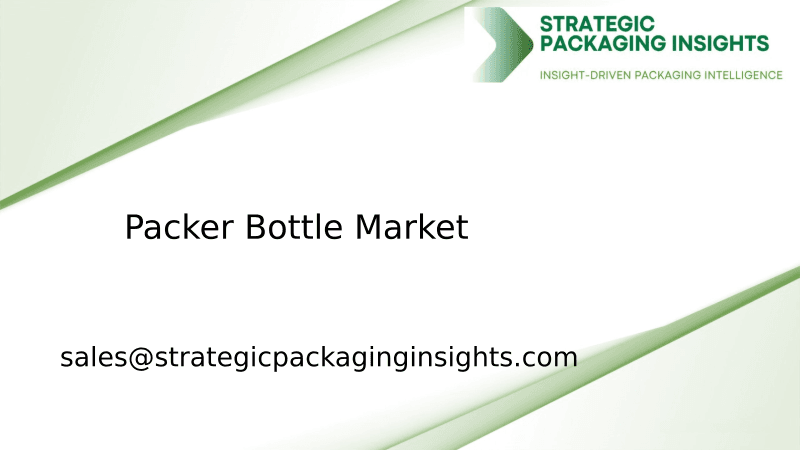
The packer bottle market was valued at $3.5 billion in 2024 and is projected to reach $5.8 billion by 2033, growing at a CAGR of 5.2% during the forecast period 2025–2033.
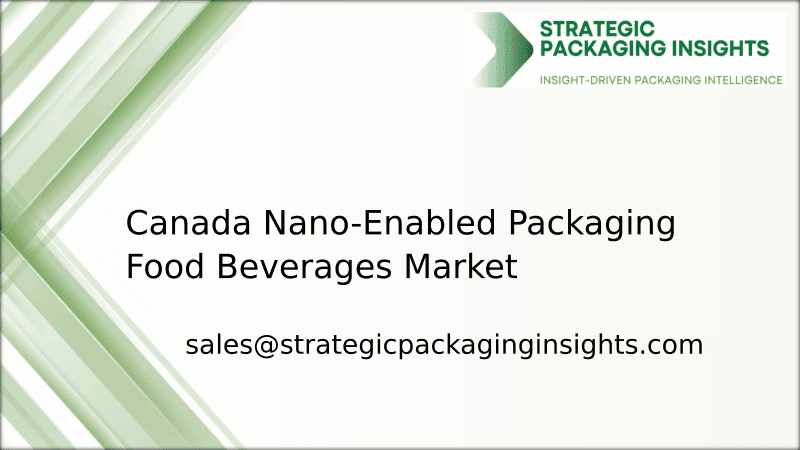
The Canada Nano-Enabled Packaging Food Beverages market was valued at $1.2 billion in 2024 and is projected to reach $3.5 billion by 2033, growing at a CAGR of 12.5% during the forecast period 2025–2033.
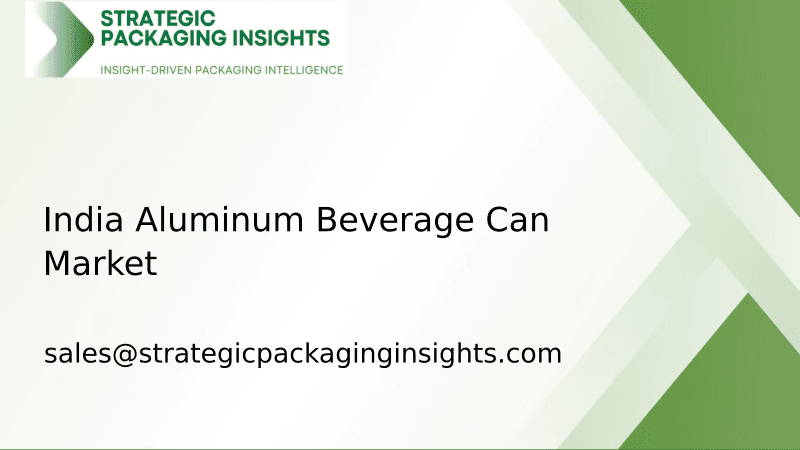
The India Aluminum Beverage Can market was valued at $1.2 billion in 2024 and is projected to reach $2.5 billion by 2033, growing at a CAGR of 8.5% during the forecast period 2025–2033.
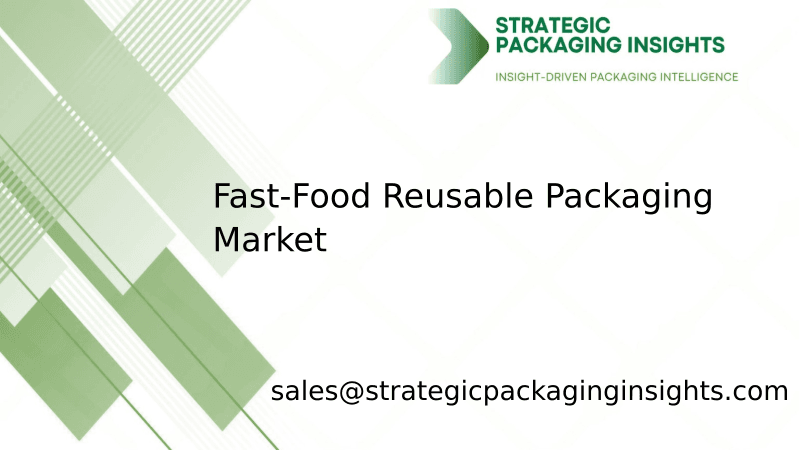
The fast-food reusable packaging market was valued at $1.2 billion in 2024 and is projected to reach $3.5 billion by 2033, growing at a CAGR of 12.5% during the forecast period 2025–2033.

The pallets market was valued at $59.91 billion in 2024 and is projected to reach $88.69 billion by 2033, growing at a CAGR of 4.5% during the forecast period 2025–2033.

The lamination adhesives market was valued at $2.5 billion in 2024 and is projected to reach $4.1 billion by 2033, growing at a CAGR of 5.8% during the forecast period 2025–2033.

The garment packing machine market was valued at $1.2 billion in 2024 and is projected to reach $2.5 billion by 2033, growing at a CAGR of 8.5% during the forecast period 2025–2033.
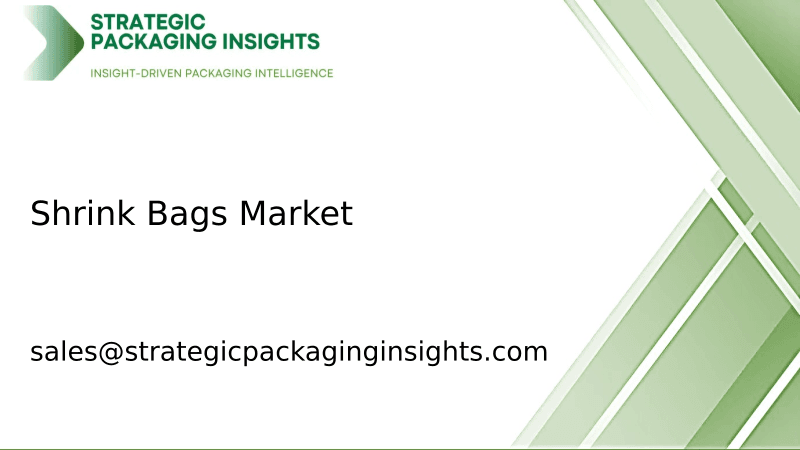
The shrink bags market was valued at $3.5 billion in 2024 and is projected to reach $5.8 billion by 2033, growing at a CAGR of 5.2% during the forecast period 2025–2033.

The beverage packaging market was valued at $128 billion in 2024 and is projected to reach $186 billion by 2033, growing at a CAGR of 4.2% during the forecast period 2025–2033.

The North America Freight and Logistics market was valued at $1,200 billion in 2024 and is projected to reach $1,800 billion by 2033, growing at a CAGR of 4.5% during the forecast period 2025–2033.

The Anti-Counterfeiting Packaging market was valued at $105 billion in 2024 and is projected to reach $182 billion by 2033, growing at a CAGR of 6.5% during the forecast period 2025–2033.

The Active and Modified Atmospheric Packaging market was valued at $15.2 billion in 2024 and is projected to reach $25.8 billion by 2033, growing at a CAGR of 6.5% during the forecast period 2025–2033.

The molded fiber packaging market was valued at $7.5 billion in 2024 and is projected to reach $12.3 billion by 2033, growing at a CAGR of 5.8% during the forecast period 2025–2033.

The micro packaging market was valued at $1.2 billion in 2024 and is projected to reach $2.5 billion by 2033, growing at a CAGR of 8.5% during the forecast period 2025–2033.

The Anti-counterfeit Pharmaceuticals Packaging market was valued at $80 billion in 2024 and is projected to reach $150 billion by 2033, growing at a CAGR of 7.5% during the forecast period 2025–2033.

The MDO-PE Film market was valued at $3.5 billion in 2024 and is projected to reach $5.8 billion by 2033, growing at a CAGR of 5.2% during the forecast period 2025–2033.
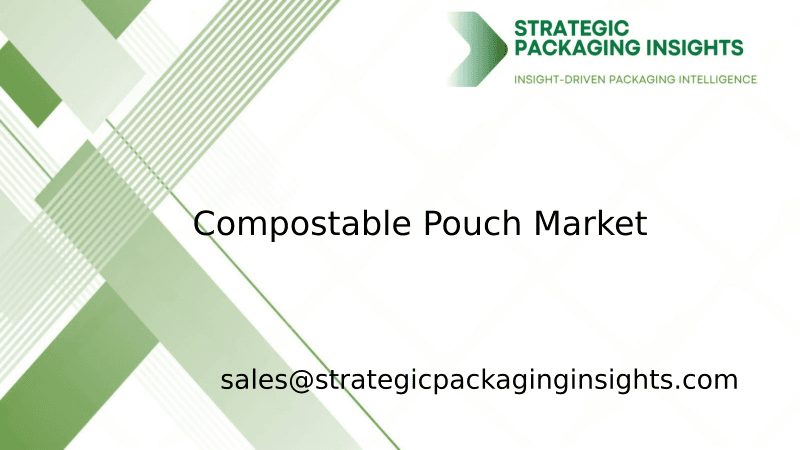
The compostable pouch market was valued at $1.2 billion in 2024 and is projected to reach $3.5 billion by 2033, growing at a CAGR of 12.5% during the forecast period 2025–2033.

The Hot Melt Glue Labeler market was valued at $1.2 billion in 2024 and is projected to reach $2.3 billion by 2033, growing at a CAGR of 6.5% during the forecast period 2025–2033.

The Ethical Label market was valued at $1.5 billion in 2024 and is projected to reach $3.2 billion by 2033, growing at a CAGR of 8.5% during the forecast period 2025–2033.

The Packaging Tensioner market was valued at $1.2 billion in 2024 and is projected to reach $2.3 billion by 2033, growing at a CAGR of 6.5% during the forecast period 2025–2033.

The foodservice packaging market was valued at $120 billion in 2024 and is projected to reach $180 billion by 2033, growing at a CAGR of 4.5% during the forecast period 2025–2033.

The nano-enabled packaging market was valued at $15.2 billion in 2024 and is projected to reach $35.6 billion by 2033, growing at a CAGR of 9.5% during the forecast period 2025–2033.

The Cold Seal Packaging market was valued at $1.5 billion in 2024 and is projected to reach $2.3 billion by 2033, growing at a CAGR of 4.8% during the forecast period 2025–2033.

The Transparent Barrier Packaging Films market was valued at $12.5 billion in 2024 and is projected to reach $20.3 billion by 2033, growing at a CAGR of 5.8% during the forecast period 2025–2033.

The Flatback Tape market was valued at $2.5 billion in 2024 and is projected to reach $4.1 billion by 2033, growing at a CAGR of 5.8% during the forecast period 2025–2033.

The packer bottle market was valued at $3.5 billion in 2024 and is projected to reach $5.8 billion by 2033, growing at a CAGR of 5.2% during the forecast period 2025–2033.

The Canada Nano-Enabled Packaging Food Beverages market was valued at $1.2 billion in 2024 and is projected to reach $3.5 billion by 2033, growing at a CAGR of 12.5% during the forecast period 2025–2033.

The India Aluminum Beverage Can market was valued at $1.2 billion in 2024 and is projected to reach $2.5 billion by 2033, growing at a CAGR of 8.5% during the forecast period 2025–2033.

The fast-food reusable packaging market was valued at $1.2 billion in 2024 and is projected to reach $3.5 billion by 2033, growing at a CAGR of 12.5% during the forecast period 2025–2033.

The pallets market was valued at $59.91 billion in 2024 and is projected to reach $88.69 billion by 2033, growing at a CAGR of 4.5% during the forecast period 2025–2033.

The lamination adhesives market was valued at $2.5 billion in 2024 and is projected to reach $4.1 billion by 2033, growing at a CAGR of 5.8% during the forecast period 2025–2033.

The garment packing machine market was valued at $1.2 billion in 2024 and is projected to reach $2.5 billion by 2033, growing at a CAGR of 8.5% during the forecast period 2025–2033.

The shrink bags market was valued at $3.5 billion in 2024 and is projected to reach $5.8 billion by 2033, growing at a CAGR of 5.2% during the forecast period 2025–2033.

The beverage packaging market was valued at $128 billion in 2024 and is projected to reach $186 billion by 2033, growing at a CAGR of 4.2% during the forecast period 2025–2033.

The North America Freight and Logistics market was valued at $1,200 billion in 2024 and is projected to reach $1,800 billion by 2033, growing at a CAGR of 4.5% during the forecast period 2025–2033.

The Anti-Counterfeiting Packaging market was valued at $105 billion in 2024 and is projected to reach $182 billion by 2033, growing at a CAGR of 6.5% during the forecast period 2025–2033.

The Active and Modified Atmospheric Packaging market was valued at $15.2 billion in 2024 and is projected to reach $25.8 billion by 2033, growing at a CAGR of 6.5% during the forecast period 2025–2033.

The molded fiber packaging market was valued at $7.5 billion in 2024 and is projected to reach $12.3 billion by 2033, growing at a CAGR of 5.8% during the forecast period 2025–2033.

The micro packaging market was valued at $1.2 billion in 2024 and is projected to reach $2.5 billion by 2033, growing at a CAGR of 8.5% during the forecast period 2025–2033.

The Anti-counterfeit Pharmaceuticals Packaging market was valued at $80 billion in 2024 and is projected to reach $150 billion by 2033, growing at a CAGR of 7.5% during the forecast period 2025–2033.

The MDO-PE Film market was valued at $3.5 billion in 2024 and is projected to reach $5.8 billion by 2033, growing at a CAGR of 5.2% during the forecast period 2025–2033.

The compostable pouch market was valued at $1.2 billion in 2024 and is projected to reach $3.5 billion by 2033, growing at a CAGR of 12.5% during the forecast period 2025–2033.
